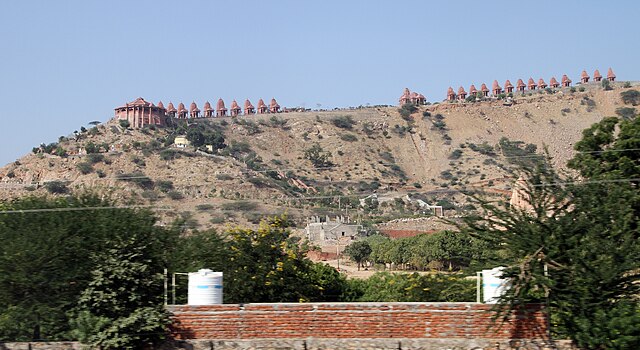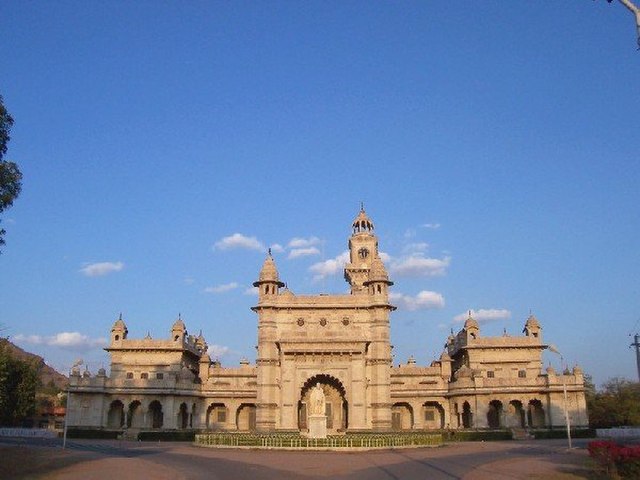Picture this: a city where the scent of incense mingles with the aroma of spicy street food, where ancient forts whisper tales of valor, and a sacred shrine draws millions seeking peace. That’s Ajmer for you—a vibrant tapestry of spirituality, history, and culture nestled in the heart of Rajasthan, India. Whether you’re a history buff, a spiritual seeker, or just someone craving an authentic Indian experience, Ajmer has something to captivate your soul. Let’s dive into what makes this city a must-visit, shall we?
Why Ajmer Feels Like a Warm Embrace

Ajmer is like that friend who welcomes you with open arms, no matter where you’re from. Tucked between the rugged Aravali hills, this city is a melting pot of cultures, religions, and traditions. It’s home to the world-famous Dargah Sharif, a Sufi shrine that radiates peace, but there’s so much more to explore. From serene lakes to bustling bazaars, Ajmer is a place where every corner tells a story. Ready to uncover its magic?
The Heartbeat of Ajmer: Dargah Sharif
If Ajmer has a heartbeat, it’s the Dargah Sharif, the tomb of the revered Sufi saint Khwaja Moinuddin Chishti. This 13th-century shrine isn’t just a place of worship; it’s a symbol of unity, drawing people of all faiths. As you step into the courtyard, the sound of qawwali music fills the air, and the scent of roses offered at the shrine wraps you in calm. Ever wondered what it feels like to be part of something bigger than yourself? Visiting the Dargah during the Urs festival, when pilgrims flood the city, is like stepping into a sea of devotion.
Tips for Visiting the Dargah
Visiting the Dargah is a soul-stirring experience, but a little prep goes a long way. Dress modestly—think covered shoulders and knees—and leave your shoes at the entrance. Women may want to carry a scarf to cover their heads as a sign of respect. The best time to visit is early morning or late evening to avoid crowds. And don’t miss the massive cauldrons, or degs, where communal meals are cooked for thousands—a testament to the shrine’s spirit of sharing.
Ana Sagar Lake: A Slice of Serenity
Need a break from the hustle? Ana Sagar Lake is Ajmer’s answer to tranquility. This man-made lake, built in the 12th century by Anaji Chauhan, is like a mirror reflecting the Aravali hills. Stroll along the marble pavilions or take a boat ride at sunset when the sky paints the water in hues of orange and pink. It’s the perfect spot to unwind, maybe with a cup of chai from a nearby vendor. Who doesn’t love a moment of peace with a view?
Activities at Ana Sagar
Besides soaking in the views, Ana Sagar is great for a leisurely walk or a picnic with friends. The nearby Daulat Bagh gardens, with their manicured lawns, add to the charm. If you’re lucky, you might catch a local festival or a kite-flying event here. Pro tip: bring a camera—the lake’s beauty deserves to be captured!
Ajmer’s Historical Treasures
Ajmer isn’t just about spirituality; it’s a history lover’s paradise. The city has witnessed the rise and fall of empires, from the Chauhans to the Mughals and the British. Each era has left its mark, making Ajmer a living museum of India’s past. Let’s explore some of its historical gems.
Taragarh Fort: The Silent Sentinel
Perched on a hill overlooking Ajmer, Taragarh Fort is like a wise old guardian watching over the city. Built in the 8th century, it’s one of Rajasthan’s oldest hill forts. The climb to the top is a bit of a workout, but the panoramic views of Ajmer are worth every step. Imagine standing where warriors once planned battles, with the wind carrying echoes of history. Cool, right?
Exploring Taragarh
The fort’s rugged walls and crumbling ramparts tell tales of battles fought and won. Inside, you’ll find remnants of old palaces and water tanks. It’s less crowded than other Rajasthani forts, so you can explore at your own pace. Just wear comfy shoes—the terrain can be uneven—and carry water, especially in the summer heat.
Adhai Din Ka Jhonpra: A Timeless Marvel
Ever heard of a mosque built in two-and-a-half days? That’s the legend behind Adhai Din Ka Jhonpra, one of India’s oldest mosques. This architectural wonder, built in 1192, blends Hindu and Islamic styles with intricate carvings and towering arches. It’s like a bridge between two worlds, showing how cultures intertwined in medieval India. Visiting here feels like stepping into a history book.
The Flavors of Ajmer: A Foodie’s Delight
No trip to Ajmer is complete without indulging in its food. Rajasthani cuisine is a feast for the senses, and Ajmer’s street food scene is a treasure trove of flavors. From spicy kachoris to sweet jalebis, your taste buds are in for a treat. Hungry yet?
Must-Try Dishes in Ajmer
Start with a plate of dal baati churma, Rajasthan’s iconic dish. The crispy baati, dunked in ghee and served with spicy dal, is comfort food at its best. For street food lovers, try the samosas and kachoris at Shankar Chaat Bhandar near the Dargah. And don’t skip dessert—Ajmer’s malpua, dripping with syrup, is pure bliss. Want a local secret? Head to Madina Hotel for a bowl of kadhi kachori—it’s a game-changer.
Where to Eat
Besides street stalls, Ajmer has some great restaurants. Honeydew Restaurant offers a mix of Rajasthani and North Indian dishes in a cozy setting. For a fancier vibe, try the rooftop at Ambrosia, where you can enjoy kebabs with a view of Ana Sagar Lake. Wherever you eat, the warmth of Ajmer’s hospitality will make every bite memorable.
Shopping in Ajmer: A Treasure Hunt

Love a good bargain? Ajmer’s bazaars are a shopper’s paradise. From vibrant textiles to intricate jewelry, you’ll find souvenirs that capture the city’s essence. The Dargah Bazaar is a must-visit, buzzing with stalls selling everything from prayer rugs to rosewater. Ever haggled for a pair of jootis? It’s an experience you won’t forget!
What to Buy
Pick up some bandhani dupattas or block-printed fabrics for a touch of Rajasthani flair. Silver jewelry, especially bangles and anklets, is another great find. If you’re near the Dargah, grab some attar (traditional perfume) or a small brass lamp as a keepsake. The Nala Bazaar is perfect for spices and local sweets like sohan halwa.
Festivals and Events: Ajmer’s Vibrant Soul
Ajmer comes alive during its festivals, each one a celebration of its diverse heritage. The Urs festival at the Dargah Sharif is the biggest draw, with qawwali performances and a spiritual vibe that’s hard to describe. Other events, like Pushkar’s Camel Fair (just 15 km away), add to the region’s festive charm. Ever danced to folk music under a starlit sky? Ajmer’s festivals might just make that happen.
Planning Your Visit During Festivals
If you’re aiming for the Urs, book accommodations well in advance—Ajmer gets packed! The festival usually falls in the Islamic month of Rajab, so check the lunar calendar. For a less crowded experience, visit during Diwali or Holi, when the city sparkles with lights and colors. Either way, you’re in for a cultural extravaganza.
Getting to Ajmer: Your Travel Guide
Getting to Ajmer is easier than you might think. The city is well-connected by road, rail, and air. Jaipur, the nearest airport, is about 130 km away, and regular buses and trains run from Delhi, Jaipur, and Udaipur. Once you’re in Ajmer, auto-rickshaws and cabs make getting around a breeze. Pro tip: negotiate fares with rickshaw drivers to avoid tourist prices!
Where to Stay
Ajmer has options for every budget. For luxury, check into The Fern Residency, which offers modern amenities and great views. Budget travelers will love Hotel Embassy, a cozy spot near the railway station. If you want a heritage vibe, try Mansingh Palace, where you can live like royalty without breaking the bank.
Day Trips from Ajmer: Exploring Nearby Wonders

Ajmer’s location makes it a great base for day trips. The holy town of Pushkar, just a 30-minute drive away, is famous for its Brahma Temple and vibrant ghats. Want to explore more forts? Kishangarh, known as the “Marble City,” is another gem nearby. Each trip is like a mini-adventure, adding layers to your Ajmer experience.
Pushkar: A Spiritual Side Trip
Pushkar is like Ajmer’s quirky sibling, with its hippie vibe and sacred lake. Visit the Brahma Temple—one of the few in the world—or take a camel ride during the Pushkar Fair. The town’s cafes, serving everything from falafel to lassi, are perfect for a relaxed afternoon. It’s a short trip that packs a big punch.
Why Ajmer Stays With You
Ajmer isn’t just a destination; it’s a feeling. It’s the warmth of a stranger offering you prasad at the Dargah, the crunch of a fresh kachori, the sight of Ana Sagar shimmering at dusk. This city weaves together spirituality, history, and culture in a way that feels effortless yet profound. Whether you’re seeking peace, adventure, or a taste of Rajasthan, Ajmer delivers. So, what’s stopping you from packing your bags and experiencing it for yourself?
Conclusion
Ajmer is a city that captures your heart with its blend of devotion, history, and vibrant culture. From the sacred Dargah Sharif to the tranquil Ana Sagar Lake, from ancient forts to bustling bazaars, every moment in Ajmer feels like a discovery. It’s a place where you can lose yourself in qawwali music, savor spicy Rajasthani flavors, or simply soak in the beauty of a sunset over the Aravalis. Whether you’re a first-time visitor or a seasoned traveler, Ajmer’s charm will leave you longing to return. So, go ahead—plan that trip, embrace the chaos, and let Ajmer work its magic on you.
Frequently Asked Questions
1. What is the best time to visit Ajmer?
The best time to visit Ajmer is between October and March, when the weather is cool and pleasant, perfect for exploring the city’s attractions. Avoid the scorching summer months (April to June) unless you’re ready for some serious heat!
2. Is Ajmer safe for solo travelers?
Absolutely! Ajmer is generally safe for solo travelers, including women, as long as you take standard precautions like avoiding isolated areas at night and dressing modestly at religious sites.
3. How many days are enough to explore Ajmer?
A 2-3 day trip is ideal to cover Ajmer’s main attractions, like the Dargah Sharif, Ana Sagar Lake, and Taragarh Fort. Add an extra day if you plan to visit nearby Pushkar.
4. What should I wear when visiting the Dargah Sharif?
Dress modestly—opt for clothing that covers your shoulders and knees. Women should carry a scarf to cover their heads, and everyone must remove their shoes before entering the shrine.
5. Can I visit Ajmer and Pushkar in one trip?
Definitely! Pushkar is just 15 km from Ajmer, making it an easy day trip. You can explore both places comfortably in 3-4 days, soaking in their unique vibes.

